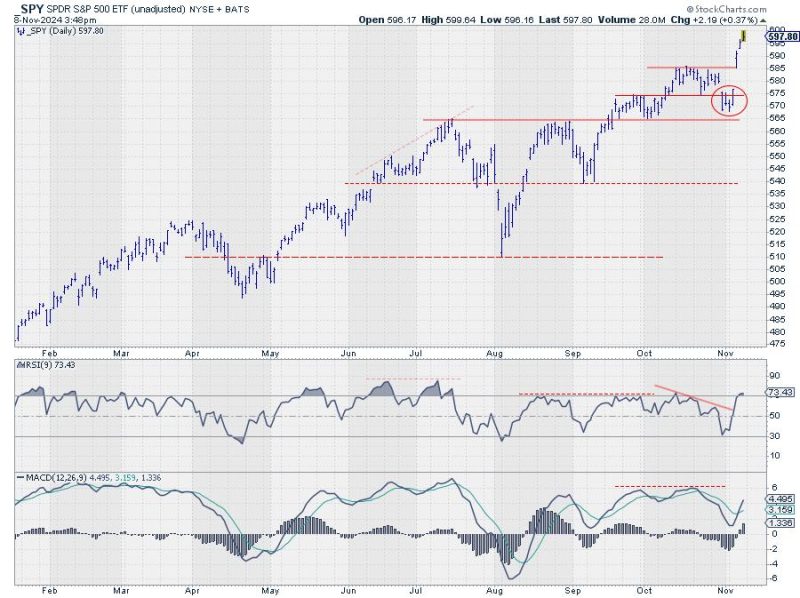Sector 1: Technology
The technology sector has always been at the forefront of advancements in intelligence gathering and espionage techniques. With the rapid development of cutting-edge tools such as artificial intelligence (AI), machine learning, and advanced data analytics, intelligence agencies are increasingly relying on technology to stay ahead of their adversaries. In recent years, there has been a significant emphasis on cyber warfare and digital espionage, with nations investing heavily in developing offensive cyber capabilities to target critical infrastructure, disrupt enemy communications, and steal sensitive information.
One notable trend in the technology sector that is driving the spy game back to offense is the rise of quantum computing. Quantum computing has the potential to revolutionize encryption techniques and break traditional cryptographic algorithms, making it a game-changer for intelligence agencies looking to improve their offensive capabilities. By harnessing the power of quantum computers, spies can decrypt secure communications, crack passwords, and access encrypted data that was previously thought to be secure from prying eyes.
In addition to quantum computing, advancements in surveillance technologies such as drones, satellite imaging, and facial recognition have also played a crucial role in enabling intelligence agencies to conduct offensive operations with greater precision and efficiency. These technologies allow spies to gather real-time intelligence, monitor enemy movements, and track high-value targets without being detected, giving them a significant advantage in the field of espionage.
Sector 2: Defense
The defense sector has long been a key player in the world of intelligence and espionage, providing the necessary tools and resources to support offensive operations. In recent years, there has been a growing emphasis on modernizing defense capabilities to counter emerging threats and challenges, particularly in the realm of cyber warfare and information operations.
One key development in the defense sector that is reshaping the spy game is the integration of artificial intelligence and autonomous systems into military operations. These technologies enable intelligence agencies to conduct offensive cyber operations, carry out precision strikes, and launch targeted information campaigns with greater speed, accuracy, and efficiency. By leveraging AI-driven algorithms and autonomous platforms, spies can identify vulnerabilities, exploit weaknesses, and disrupt enemy networks in ways that were previously unimaginable.
Moreover, the defense sector is also investing heavily in developing next-generation weapons systems, electronic warfare capabilities, and advanced surveillance technologies to enhance offensive operations and maintain strategic superiority on the battlefield. From hypersonic missiles to directed energy weapons, these cutting-edge tools give intelligence agencies the ability to project power, deter adversaries, and achieve their offensive objectives with minimal risk and maximum impact.
Sector 3: Private Sector
The private sector has emerged as a critical player in the spy game, providing intelligence agencies with access to advanced technologies, expertise, and resources that are essential for conducting offensive operations. In recent years, there has been a growing trend towards public-private partnerships in the field of intelligence and espionage, with governments collaborating with private companies to enhance their offensive capabilities and stay ahead of evolving threats.
One significant development in the private sector that is driving the spy game back to offense is the rise of cybersecurity firms and technology companies specializing in developing tools and solutions to protect against cyber threats. These companies work closely with intelligence agencies to identify vulnerabilities, defend against cyber attacks, and conduct offensive cyber operations to disrupt hostile networks and adversaries. By leveraging the expertise of private sector firms, intelligence agencies can enhance their offensive capabilities and address critical gaps in their cyber defenses.
Moreover, the private sector is also playing a key role in advancing surveillance technologies, communications systems, and intelligence-gathering tools that enable spies to operate more effectively in hostile environments and gather critical intelligence without being detected. From encrypted communication platforms to secure data storage solutions, private companies are providing intelligence agencies with the necessary tools and technologies to carry out offensive operations with precision, stealth, and success.
In conclusion, the convergence of technology, defense, and the private sector is reshaping the world of intelligence and espionage, driving spies back to offense and giving them the edge they need to stay ahead of their adversaries. By leveraging cutting-edge tools, modernizing defense capabilities, and partnering with private sector firms, intelligence agencies are enhancing their offensive operations, improving their tactical advantage, and achieving their strategic objectives with greater speed and efficiency. As the spy game continues to evolve in the digital age, these three sectors will play a crucial role in shaping the future of intelligence and espionage, ensuring that spies remain at the forefront of innovation and effectiveness in the pursuit of national security and strategic interests.

























